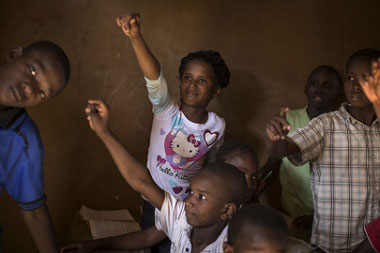"This year, I wish to emphasize the importance of ensuring that the commitments made by the international community to the world’s children are extended to a group of children who are often forgotten or overlooked: those deprived of their liberty."
Secretary-General Ban Ki-moon

Students from different ethnic groups attend a class together at a school in Gao, Mali. UN Photo/Marco Dormino
By resolution 836(IX) of 14 December 1954, the General Assembly recommended that all countries institute a Universal Children's Day, to be observed as a day of worldwide fraternity and understanding between children. It recommended that the Day was to be observed also as a day of activity devoted to promoting the ideals and objectives of the Charter and the welfare of the children of the world.
The Assembly suggested to governments that the Day be observed on the date and in the way which each considers appropriate.
The date 20 November marks the day on which the Assembly adopted the Declaration of the Rights of the Child, in 1959, and the Convention on the Rights of the Child, in 1989.
The Convention, which is the most widely ratified international human rights treaty, sets out a number of children’s rights including the right to life, to health, to education and to play, as well as the right to family life, to be protected from violence, to not be discriminated, and to have their views heard.
On the basis of the Convention and joint effort by all the countries and regions, let us promote and celebrate children’s right on the Universal Children's Day, and continuously build up a living-friendly environment for children in the world through dialogues and actions.
